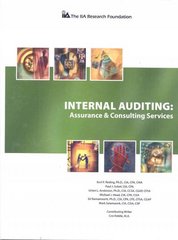Answered step by step
Verified Expert Solution
Question
1 Approved Answer
Can you calculate the theoretical calculations for part A & B. Show clear workings please. Introduction At this stage you should be familiar with the


Can you calculate the theoretical calculations for part A & B. Show clear workings please.
Introduction At this stage you should be familiar with the idea that a resistor offers an opposition to the flow of electric current. This opposition is known as the resistance and its value is constant for both AC and DC conditions. In a DC circuit a capacitor will prevent current from flowing through it -put simply, it acts like an open circuit. An inductor in a DC circuit will offer no obstruction to current flow - it behaves like a short circuit. The reason for the above conditions can be understood by recalling the how each component is physically constructed. In this experiment we will examine how both inductors and capacitors offer an opposition to AC current flow. It may be imagined that both the capacitor and inductor have a quality similar to resistance but only applicable to AC conditions. This quality is known as the reactance and given the symbol XC for a capacitor and XL for an inductor. The amount of reactance each component offers depends firstly on the component value (which is dependant on the physical make up of the component e.g., area of plates or number of turns etc.) and secondly, and more importantly, depends on the frequency of the applied voltage. The formula for the reactance of each component are given below where =2f : XC=jC1andXL=jL Remember that a version of Ohm's law applies for reactance also i.e.: VL=IXL and VC=IXC Part A Theoretical Calculation 1. Using peak values for all voltages complete the following table: 2. Draw a phasor diagram and determine the phase angle between the supply voltage the voltage across the capacitor. Table 1: Calculated Values Experiment 1. Build the circuit of figure 1 below and set the function generator to supply a 10Vpp ( 5 Volt peak) sinusoid of frequency 1000Hz. Text 2. Observe and sketch the input voltage and the voltage across the capacitor on the oscilloscope. Alternatively take a picture of the oscilloscope screen for your report. 3. Complete the following table. Note to measure the value of VR the position of the resistor and capacitor can be switched in the circuit and the reading can be observed on channel 2. Part B Theoretical Calculation 3. Using peak values for all voltages complete the following table: 4. Draw a phasor diagram and determine the phase angle between the supply voltage the voltage across the capacitor. Table 3: Calculated Values Experiment 4. Build the circuit of figure 1 below and set the function generator to supply a 10Vpp (5 Volt peak) sinusoid of frequency 89kHz. 5. Observe the traces on the oscilloscope screen and include a picture of these traces in your report 6. Complete the following tableStep by Step Solution
There are 3 Steps involved in it
Step: 1

Get Instant Access to Expert-Tailored Solutions
See step-by-step solutions with expert insights and AI powered tools for academic success
Step: 2

Step: 3

Ace Your Homework with AI
Get the answers you need in no time with our AI-driven, step-by-step assistance
Get Started


